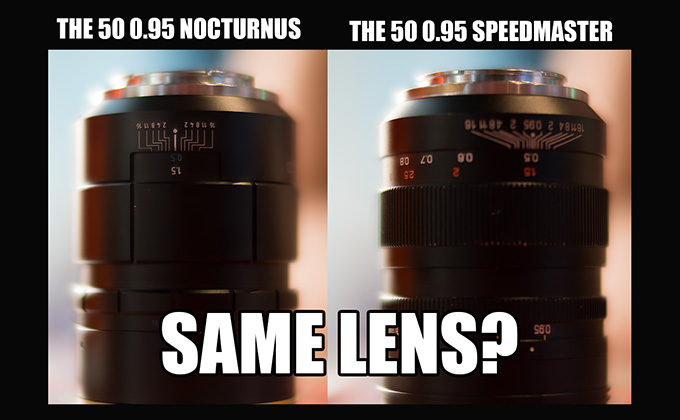
Crazy Comparison! The Meyer Optik 50 0.95 Nocturnus and the Mitakon Speedmaster 50 0.95. Same lens?
While not really a crazy comparison as many think these are the same lens, I was asked by around 40 people to do this, so here you go!
As you can see in the header image, these two lenses look almost identical in size and shape. In fact, many would say they have the same glass inside. I recently received the Myer Optik Nocturnus II 50 0.95 and enjoyed my 1st days with it. I have found it to be somewhat sharp wide open (with some glow), have minimal CA (compared to the Leica Noctilux which has loads of it) and from memory could have sworn it was giving me smoother bokeh than the Mitakon did with a little more sharpness.
Many online are saying these two lenses are exactly the same lens, as in Meyer has pulled a Hasselblad and covered the lens with a new shell (Ala Lunar and Stellar). When I contacted Meyer Optik they told me otherwise. You can see what they said in this report HERE. But to make it easy on you they said it was NOT the same lens. But I wanted to see for myself…so…
…I decided to rent a Mitakon Speedmaster and do a couple quick side by side shots to see the differences. When I did…I struggled to see any kind of striking difference initially but as I shot more of it side by side with the Nocturnus I did in fact start to see the differences. While slight, they are there. Also, they can not be the same exact lens as the Mitakon has 9 aperture blades. The Meyer has 15. So there is a difference right there. The Mitakon aperture dial goes from left to right. The Nocturnus goes from right to left.
The Meyer Optik Nocturnus is indeed made in Germany. It looks and yes indeed feels better in the hand when shooting. It is silky smooth, and the build feels just as good as ANY Leica lens. Fact.
The price? $2999. Yep, this is pricey and I was hoping for it to be at least 2-3 steps above the Mitakon. For the cost it should be. It instantly wins in build and feel though, and IMO, design of the outer barrel.
The Mitakon feels a tad cheaper in the hand, though still very good for the price. The Mitakon is $749 and looks like a normal lens. The copy I rented had some loose play with the focus ring but in use and for IQ it was perfect and as it should be. At $749, this one is priced great for what it is. Both are manual focus lenses.
Now I will say up front that these quick test shots are nothing special. I am still doing my review which will have better images. This is just a quickie, posted for those who keep asking me to do a side by side of these two. I only have the Mitakon for a day, so here ya go…
1st up the Nocturnus II at 0.95. I focused critically with magnification. I did this to see which lens was indeed sharper wide open. Click it for larger and to see the real 100% crop.
–
Here we have the Mitakon. 0.95 Same as above with critical focus. Click it for larger and true 100% crop.
So at first glance, they look just about the same. Almost exact if you just glance at them. Upon closer inspection I do see slightly bolder color from the Nocturnus (look at the red label). These have no PP – they are just right from the cameras RAW files.
It appears the Nocturnus is ever so slightly sharper wide open but the difference here is negligible. Look at the number 4218. It is sharper with the Nocturnus II. Color is richer with the Nocturnus II. Bokeh? This is where we should see the most difference as the Noct has 15 aperture blades and the Mitakon has 9. So we should have a smoother bokeh from the Nocturnus. But do we? Let’s see a shot designed for busy bokeh. I usually take this shot to test the bokeh character of lenses and the sharpness at the same time.
The sharpness of the wall and the bokeh of the trees in the BG. Both shots were at 0.95 and again, while slight, I see better bokeh/smoother bokeh from the Nocturnus II. But man, you do really have to look close to see it. Click them for larger and to see for yourself.
Nocturnus, 0.95
–
Speedmaster 0.95
–
So far, for the $2200 difference in the Nocturnus we are seeing a slight sharpness increase and slightly smoother bokeh. In regards to build, the Nocturnus is gorgeous. It truly feels as good as a higher end Leica lens. Something like a Noctilux (nut lighter and smaller) and 50 APO in regards to build quality. In fact, it is one of the best feeling lenses I have had in my hands in a long time. So yes, there is a difference with the Nocturnus in build, and it is made in Germany, or at least “assembled” in Germany.
The Speedmaster has had some QC issues from many reports. Loose barrels, soft glass, etc. I think the Meyer is here to show us that this kind of lens for a Sony can be made better, and it is. But is it worth the extra $2200? Hmmmm. That would depend on how much you value that last few % of quality, and how much money you want to spend and if you want the better looking and made and feeling lens of the two.
Here is one more where I saw a much bigger difference in the sharpness.
CLICK ON THESE TWO. You will see the difference. The Nocturnus is a better lens but they are oh so close.
My review of the Nocturnus will be up SOON. Stay tuned.

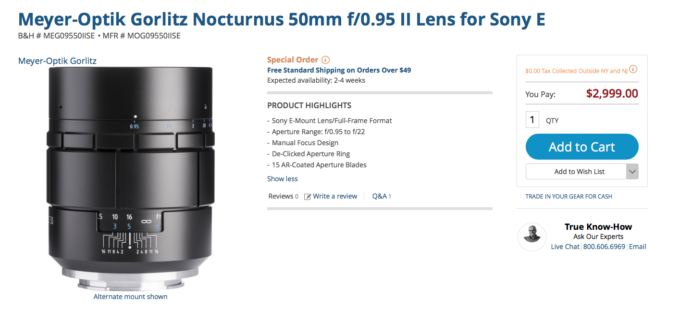
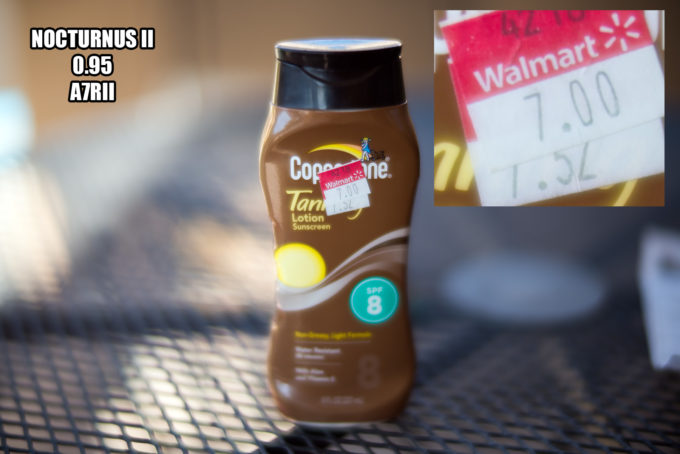
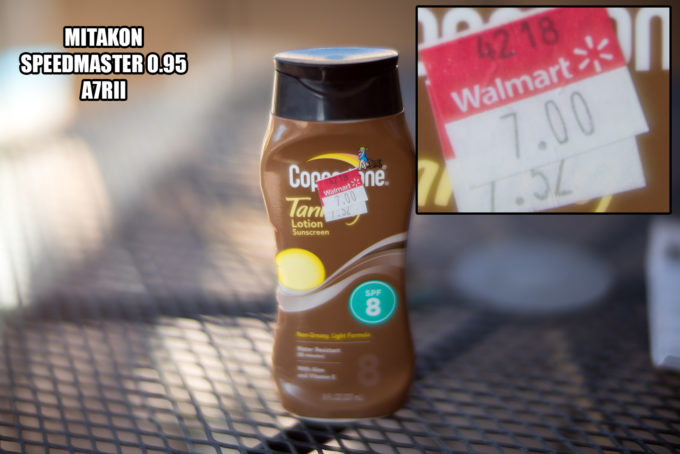
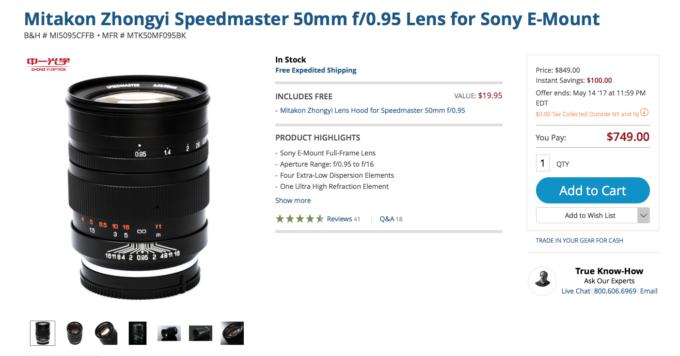
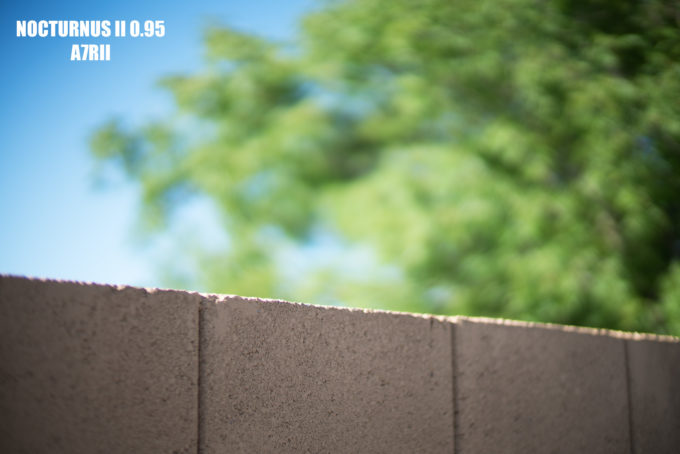
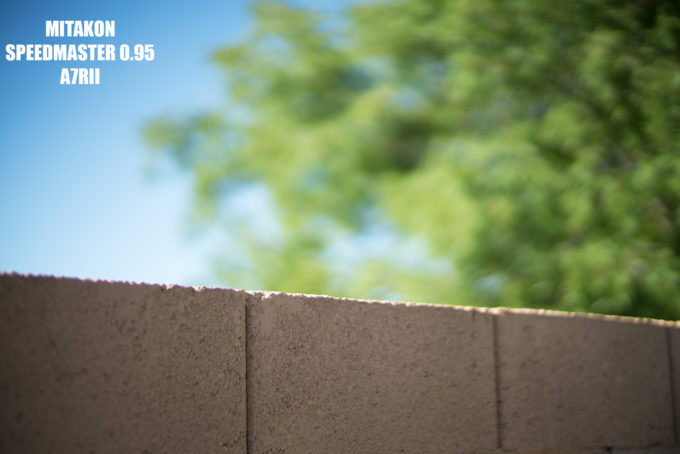
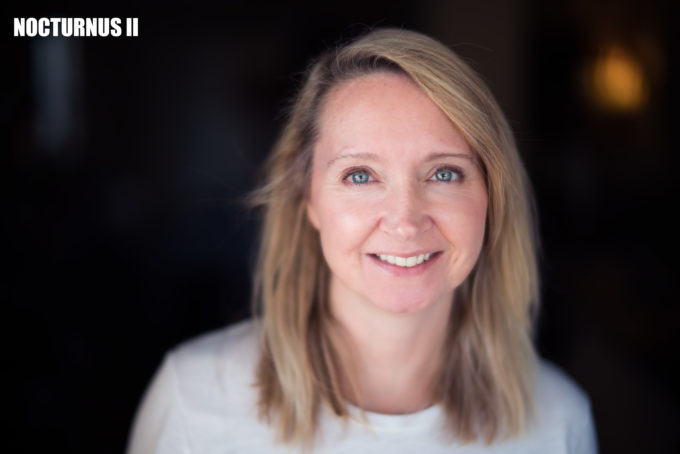
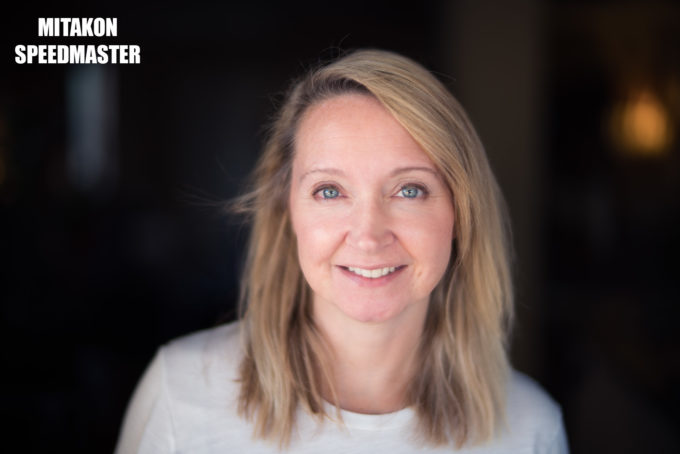


Thanks for the quick comparison Steve, I guess it’s all down to how deep the buyer’s pocket and priority, plenty of people wouldn’t consider $2000 is a lot of money. Just like the Leica owners never blink an eye on the cost of these gear because they’re willing pay the premium price for their ‘ideal’ product which may not be necessary technically perfect. But I know where my priority lies, bang for buck and the Mitakon is simply unbeatable, I compared the 50 0.95 against the Nikon 58 1.2 Noct and the Leica 50 f1.0 Noct (version 4) and apart that the Mitakon was ‘sharper’ at wide open, I find it hard to see the difference in bokeh and feel between the three. This crazy comparison of your just confirmed my own conclusion well.
The images aren’t exactly the same because they weren’t shot exactly the same. Maybe there’s other differences, but it’s hard to tell for certain. The stationary shot in the beginning shows the least differences, though they’re not framed exactly the same. If two lenses are this close, I’d say it’s a toss up. No one could tell the difference either way. 9 vs 15 aperture blades probably will make some differense stopped down, but the benefit would be subjective. The Zeiss lenses used by Hasselblad had only 5 straight blades for years, and I never heard much complain about that. Was the bokeh pentagon-shaped? Sure was.
The two objectives are very close. Have you taken the pictures at the same speed?
Can you make a picture of a color chart at the same speed?
Is the luminosity of the field the same, no dark corners?
Is the DOF the same ?
Best regards
This is like the difference between Leica M lenses made in Germany and Zeiss ZM lenses made in Japan.
Although non of the Zeiss lenses use exactly the same optical formula some of them are considered to be as good or even better despite being much cheaper.
The Leica lenses however have both better build (no Zeiss wobble) and quality control. And that plus higher costs for production in Germany explains the price difference.
While using the same optical formula as the Mitakon lens this Nocturnus II lens not only have a clearly different build (and better coatings), but appears to be better constructed as well. It is propably put together with much more care and therefore should have a much lower sample variation compared to the Mitakon lens as well as a much longer warranty.
Those on a budget will buy the Mitakon lens. But those who value quality and want a precision instrument, and can afford it will choose the Nocturnus II. That is the simple answer. Oh, and the fact that the Nocturnus II look much more attractive, while the Mitakon look like an ordinary lens made in China.
When you look at the side by side shots of the lenses at the beginning of the story – the one where the lens mount is at the top, the angle from the lens body down to the lens mount is identical.
These are the same lens, with the same glass. The only difference is the case it comes in (which effects the feel/build quality in hand) and the number of aperture blades. The aperture blades will effect the look when stopped down. Wide open it will make no difference and that is seen in the examples shown by Steve. They look near to identical wide open. Any differences, so small, can be down to sample variance.
The whole purpose of these lenses is to shoot wide open, so save yourself $2000 and get the Mitakon. If you care about shooting stopped down, save yourself $1500 by buying the Mitakon and another lens…
This I agree with. I think the glass is the same, but they are not the same lens. There are SLIGHT differences. if you want a better built better feeling lens with better bokeh stopped down, AND you have $3k to spare and want a 50 0.95, the Meyer is the choice. If you will only shoot wide open go for the Mistaken as the IQ is similar enough to come down to variance as Huss has said. The build and feel is a pretty big difference though, with the Meyer feeling like a premo lens and the Mitakon feeling like your average Mitakon. Also, If you look at the tree shot, wide open, there are differences in the bokeh there, so there is a difference somewhere. Smoother from the Meyer.
p.s. look at that out of focus orange blob on the right in the headshots at the end.
They are identical.
final comment. The Meyer obviously feels and looks different physically. If you don’t like the way the Mitakon handles, then it does not matter if it is cheaper. If the Meyer makes you want to use it, then the premium may be worth it.
An example – I have a Russian Helios 50mm f2 which cost me new $50. It takes fantastic pics. I have a Zeiss Sonnar 50 Zm which cost, well, at least 10 times that. It also takes fantastic pics. So anyone would be crazy to pay the extra, right? Well, the Helios has a really light aperture ring with no stops that easily knocked off setting.. Sometimes drives me absolutely bonkers and makes me not want to use it. Especially if using an unmetered camera. The Zeiss is a joy to use , always. Makes it worth the extra dough in my book.
IMHO, the aperture blades play no role whatsoever in the bokeh character, when shot wide open. Wether there are 15 blades, 9, 6 or whatever other number, wide open all lenses act as if there were NO blades.
15 blades can only give a better bokeh compared to 9 when stoppen down. This means that, when you want to show the superior bokeh quality of the 15 blades, you need to show pictures that are NOT shot wide open.
A pitty that there were no such pictures here.
My review has not yet been posted. Also, there is a difference in the tree bokeh shot, wide open. Not down to aperture blades as yes, I am aware that when wide open no blades are even being used. But I have photos of the insides of the lenses anyway. With that said, if one looks at the larger images of the trees you can clearly see the smoother bokeh in the Myer lens. It’s slight but there. So there are differences, they are just slight.
Absolutely! There IS a bokeh difference, even wide open (more nervous Mikaton). I believe the Mitakon performs worse on all criteria: valer colors, less micro contrast, less sharp…
I was just curious to see the difference between the 9 and 15 blades bokeh at f/1.4 and 2.0, especially when there are lights in the out of focus area, that could become angulated, when stopped down.
Thanks for this comparo Steve! I was one of those who were wondering.
I have to say, I don’t think there is enough of a difference to justify the huge price gap. The the wall and tree photos look the same to my eyes. The bokeh along the sharp edge of the wall is identical right down to the amount, size, shape and color of the purple and green LoCA. It is the same optical design for sure! The 15 aperture blades make no difference at f/0.95.
I owned the Mitakon and, while it is a lot of fun, I returned it because of the terrible LoCA and Coma. I was hoping the Nocturnus would be a step up, and good enough to justify the price. Oh well. You saved me $3k! 🙂
In my eyes, Mitakon too contrast compared with Meyer. Nocturnus result look more better in contrast, has somewhat good softness
I’m glad I have the Mitakon… 🙂 Even if I had to bring it to a local repair service to fix some internal loose parts. But it was just €50, still a lot of room left to reach $2200…
Hey, Steve! Did you put your hands on the Nocturnus I? It looks exactly the same as the Mitakon… inside and outside. You see a slight difference? Sorry…
Bw
Sven
It does not look the same outside, it has 15 aperture blades vs 9 so it is not the same inside. I think the glass is the same though. It’s also lighter and built/feels much better. Did I put my hands on it? How could I use both lenses if my hands were not on it. Yes, I have BOTH lenses in front of me as I type this comment. NOT the same inside, sorry. There will be a pic of this in my review of the Nocturnus to show it is different INSIDE and obviously OUTSIDE.
Steve, I was talking about the Nocturnus Mk I . It looks exactly the same as the mitakon so i would presume it´s the same lens. Maybe the Mk II is a bit different in its new coat…
Same lens to me just slightly tweaked and rebadged on the outside. The minor difference could possibly be some special coating. These images arent Zeiss/Leica/G Master quality. Sees like Meyer is trying to pull a fast one.
It is not the same lens inside or out. I think they used the same glass, but the focus feels different, the aperture blades are different (15 vs 9, and yes I checked) and the build of the Nocturnus feels much nicer in the hand. It feels like a premium lens, the Mitakon feels like a $1000 lens. There are differences but I think the glass inside is the same.
Yes, I do agree that the glass is the same. Also, this comparison has answered many questions that people have had with these two lenses so thank you for that Steve!
I gotta be honest, I can’t tell a difference. If you did a blind test I don’t think most people can either. And if you are pixel peeping that much you need to get out more.
The more expensive one does look nicer though. How is the focus ring in use compared to the Mitakon? It looks slippery, or is it like an Otus that is smooth rubber but grippy?
Assuming for a moment that they are the same optics, you probably wouldn’t see any difference with bokeh due to different aperture mechanism until stopped down.
The slight differences could just as easily be attributed to copy to copy variation.
My Mitakon had no free play in it whatsoever (but was new, not a rental).